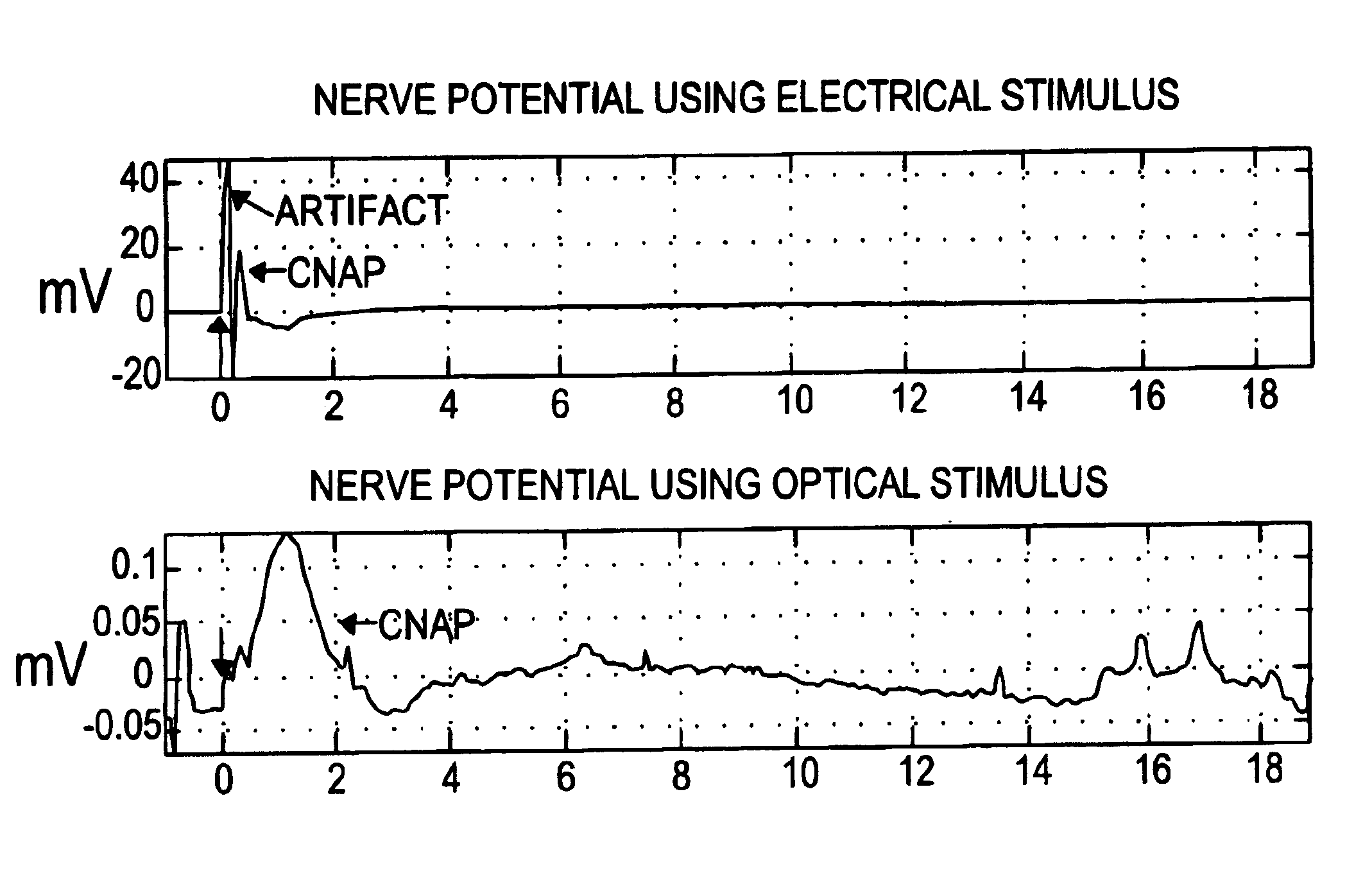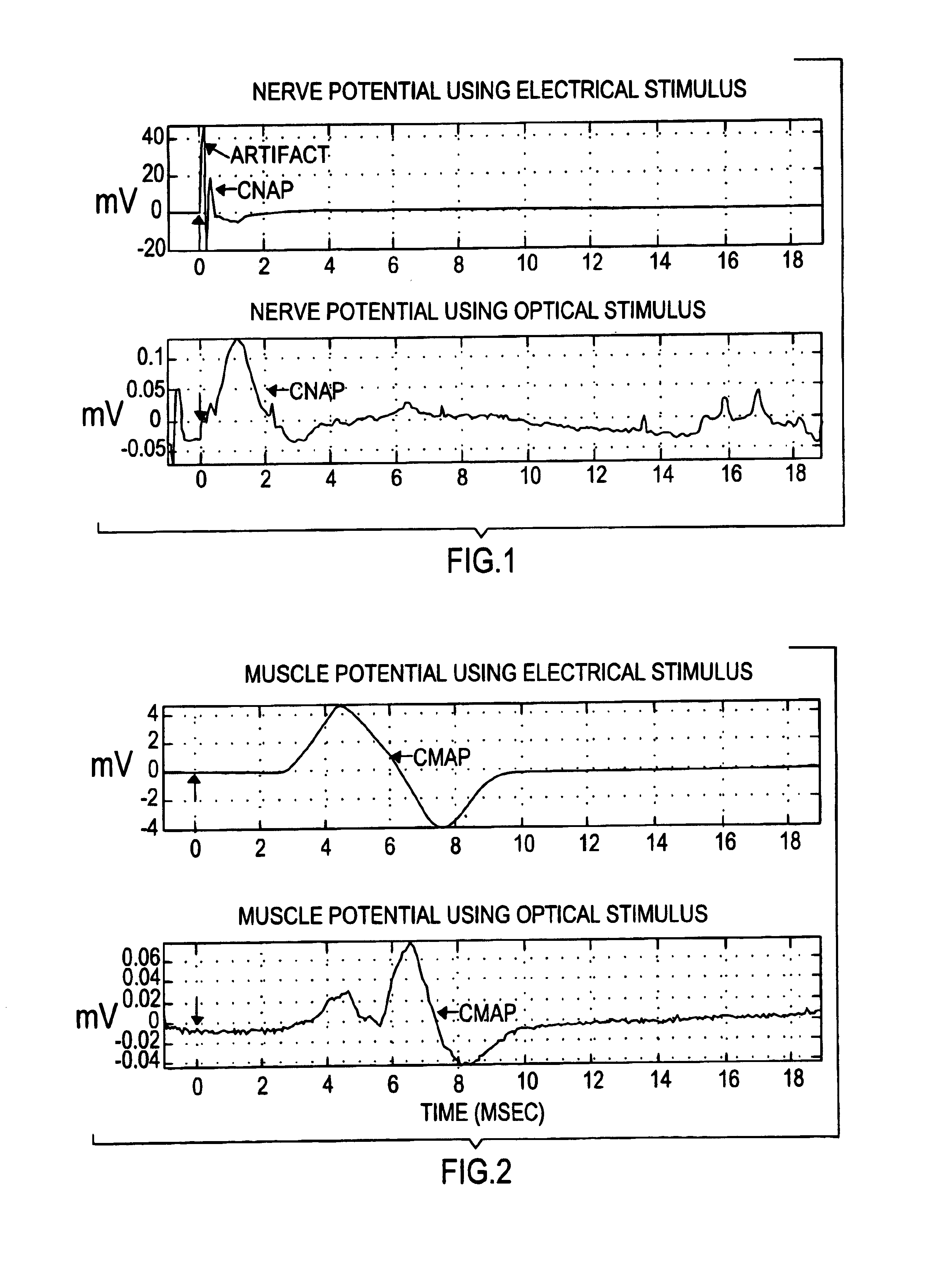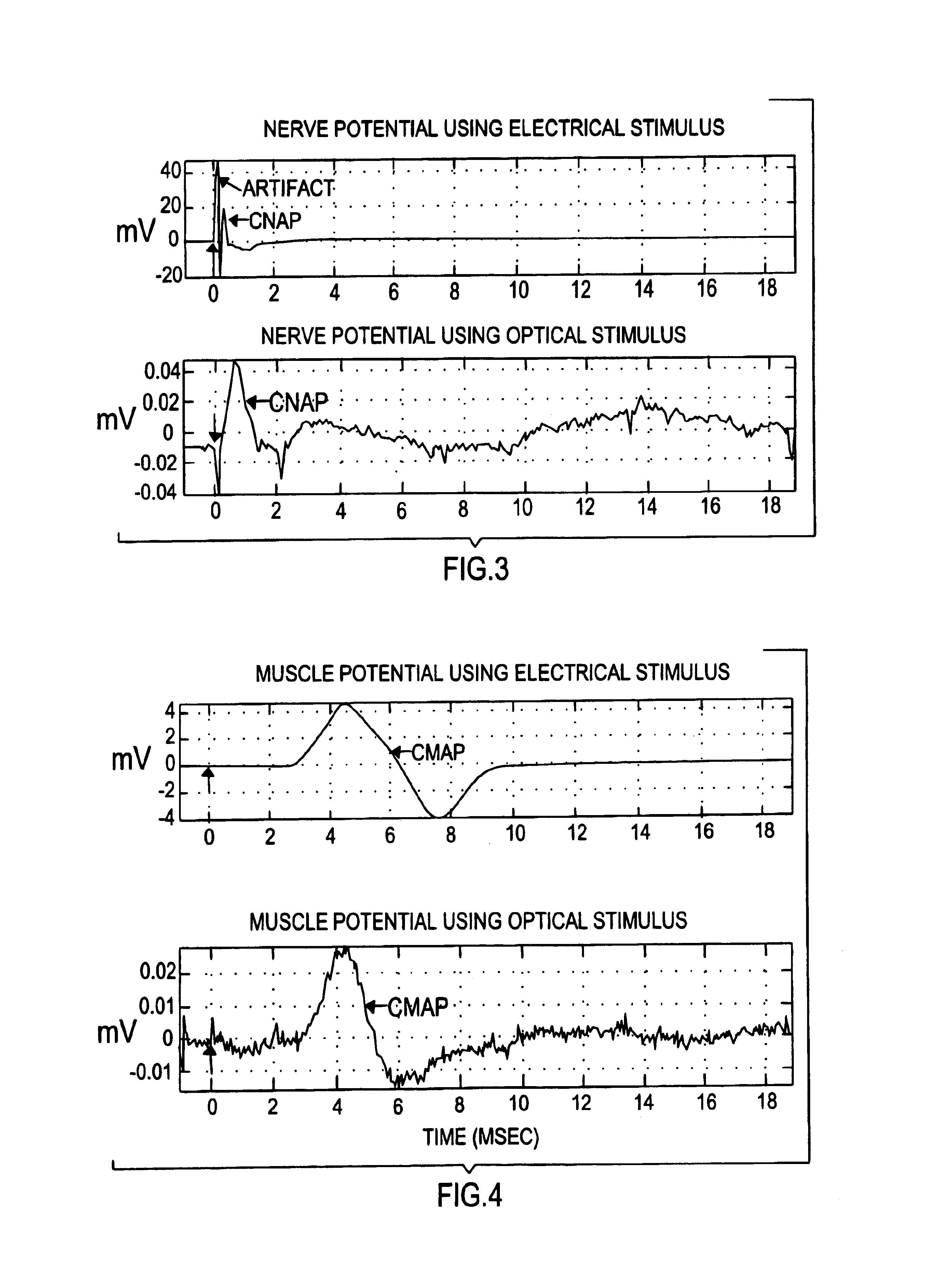Methods and devices for optical stimulation of neural tissues
a neural tissue and optical stimulation technology, applied in the field of neural tissue stimulation, can solve the problems of difficult to record electrical activity from the neuron, non-specific stimulation of neurons or damage to neurons, and the technique does not lend itself to implantable electrodes used for long-term stimulation of neural tissue, etc., to achieve the effect of increasing the electrical field size and high specificity
- Summary
- Abstract
- Description
- Claims
- Application Information
AI Technical Summary
Benefits of technology
Problems solved by technology
Method used
Image
Examples
example 1
[0069]The Northern Leopard frog (Rana Pepiens) is pithed. Subsequent to being pithed, the animal is immobilized on a wax bed. The skin covering the hamstring muscle is cut in order to expose the muscle. Subsequently, an incision is made along the length of the hamstring muscle so as to expose the sciatic nerve. The sciatic nerve is freed from the connective tissue that connected it to the surrounding muscle. For experimental purposes, several pairs of electrodes are placed on the nerve. The first pair of electrodes is capable of electrical stimulation, the second pair of electrodes is capable of recording the nerve potentials, and the third pair of electrodes are pierced into the muscle that the sciatic nerve innervates so that muscle potentials may be recorded. Additionally, the sciatic nerve was kept moist at all times by using saline water. The nerve is initially stimulated electrically to confirm its viability. Electrical recording is performed using the MP100 module. The FEL is...
PUM
 Login to View More
Login to View More Abstract
Description
Claims
Application Information
 Login to View More
Login to View More - R&D
- Intellectual Property
- Life Sciences
- Materials
- Tech Scout
- Unparalleled Data Quality
- Higher Quality Content
- 60% Fewer Hallucinations
Browse by: Latest US Patents, China's latest patents, Technical Efficacy Thesaurus, Application Domain, Technology Topic, Popular Technical Reports.
© 2025 PatSnap. All rights reserved.Legal|Privacy policy|Modern Slavery Act Transparency Statement|Sitemap|About US| Contact US: help@patsnap.com



